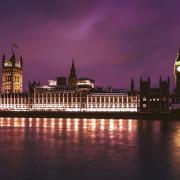
Netflix alone welcomed 26 million new subscribers in the first half of 2020. Do these media-streaming giants act as a threat to broadcasting TV services?
Since March, the vast majority of citizens in the UK stayed at home, which triggered the acceleration in the growth of services such as Netflix and Amazon Prime Video. Particularly, many parents struggled to juggle between their jobs and looking after their children, so they realised that these streaming services enabled them to focus on their work, while the children were engaged instead of distracting them. Disney capitalised on these circumstances by introducing their new streaming service, Disney Plus, and it has now gained over 60.5 million subscribers as of August 2020.
Netflix and Amazon Prime Video were already well-established alternatives to TV broadcasting, but Prime’s subscription revenue soared by 28% in the first quarter of the year due to both increased video streaming and online shopping. In addition, these apps are more practical for university students who can’t access TV broadcasting services, and many see the mentioned platforms as a long-term investment after university life, instead of the traditional cable or satellite TV.
However, broadcasting companies such as Sky and Virgin Media still receive plenty of business from loyal customers. Netflix and Prime may offer a diverse range of movies and series, but Sky Sports and BT Sport are part of a duopolistic market and account for a large proportion of market share of the sports broadcasting market. For instance, the Premier League’s broadcasting rights are split between these two firms, and football fans are required to purchase both of these firms’ channels in order to access live coverage.
Furthermore, the older generations clearly prefer traditional TV broadcasting, rather than using the new digital platforms. A survey conducted on SurveyMonkey highlighted that half the respondents who were exclusive customers of cable TV were 60 years and older. An elderly lady who wishes to remain anonymous stated that “nothing compares to the tranquil experience of browsing through the channels and spontaneously selecting a programme to watch.”
Although it is apparent that broadcasted TV appeals to a sizeable number of demographics, streaming services are certainly in the midst of a television-takeover, or may have already done so. In late 2018, Netflix had surpassed Sky’s number of subscribers in the UK and this exhibits the fact that video-streaming firms are becoming more fundamental to the entertainment consumption of households.
Last year, Prime Video signed a deal with the Premier League to broadcast three seasons of the event, and this further drives the platform as a strong competitor to the likes of Sky Sports. Another streaming service I have yet to mention is YouTube, which is considered to be one of the greatest digital revolutions of the century. We watch more than 1 billion hours’ worth of videos on this platform every day, and this combined with the giants of Netflix and Prime Video certainly form the future of TV, and a viable alternative to cable and satellite broadcasting.



























